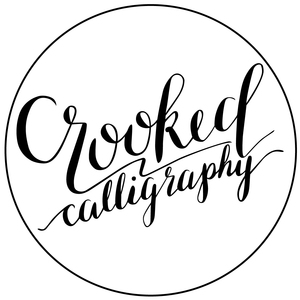Listen to a PODCAST version of this post on Apple Podcast or on Spotify
If you’re a calligrapher or artist wanting to sell products at holiday markets, craft fairs, and flea markets, WELCOME!
Here’s my best advice for making the most of your experience, based on my own success at various markets all around Los Angeles. These markets helped me make money, find customers and really launch my business out into the world!
1) Your First Craft Fair: Lessons from UniqueLA
UniqueLA is a premier pop-up market in Los Angeles. It was my first market and it TAUGHT ME SO MUCH. Here's a snapshot of my experience:
Financial Commitment: An eight foot table cost $800 for a two-day market with thousands of attendees.
Time Investment: Setup, selling, and teardown took three days (24-26 hours of time total, not including prepping inventory beforehand).
Returns: Around $800-$1200 in sales, which just covered my table fee (but read on to find out about all the non-monetary rewards).
2) Craft an Irresistible Booth Setup
You know what sucks? Selling at a market and seeing customers visit everyone’s booth but yours.
Here's how to make your booth count:
Design Scheme: Opt for a clean, cohesive design. I used black felt draped over my table for a neutral backdrop, complemented by raw wood shelves and pops of bright color for signs.
Vertical Space: Elevate your display to catch eyes and make the most use of your space. I used a tall stand to show my greeting cards and catch the eye of passers-by.
Signage: Keep it easy to read (choose a simple font) and cohesively designed to guide customers effortlessly around your booth. Customers HATE having to ask for prices, so make sure those are clear.
Simplification: Resist the urge to overcrowd. Too many options make your table feel overwhelming, so customers don’t know where to look. Instead, have a clear focal point to draw people in.
This photo from my first market is WAY TOO CROWDED, so I pared it back for future markets. But you can see how I used strategic pops of color and a tall stand to draw the eye up.
3) Bring “Just Enough” Inventory
Determining the right amount of inventory can be daunting. Here's how to approach it:
Sales Conversion Rate: Anticipate a 1-2% conversion rate. This means you can expect 10-20 sales per 1000 attendees (depending on your price point, of course).
Too Much: While over-preparing seems safe, it can be a PITA to lug your products to and from the fair. Plus, if you invest money in creating way too much inventory, you’ll have to find a way to get rid of it all later.
Too Little: On the other hand, the thought of selling out and sitting there for hours with an empty table is awful. So, consider bringing a back-up supply of your most popular or portable products. You’ll have to find the right balance that you feel comfortable with.
4) Pricing Strategies and Transaction Tips
Pricing smartly and handling transactions smoothly are crucial for a successful fair experience:
Match the Market: Adjust your pricing based on the event's vibe and audience. UniqueLA had a more upscale, hip vibe whereas a flea market might have customers looking for more affordable finds.
Sales Tax: Incorporate sales tax into your prices for simpler transactions. For example, I charged a round $5 per greeting cards, which included sales tax, so I didn’t have to give change.
Payment Methods: Ensure you can accept both cash and cards, and consider wearing a fanny pack for easy access to change and tools.
Offering a “bulk discount” (like $20 for 5 cards) encourages customers to buy more!
5) Encourage Engagement and Build Your Brand
Your booth should be more than just transactional; it's an opportunity to connect and entertain:
Live Demonstrations: Do live calligraphy or crafting right at your table. It makes you seem productive rather than bored and it definitely draws people in.
Free Samples: You can even offer to write small name cards for potential customers, which make people feel warm and fuzzy about ya and encourages them to buy.
Email List: Use the event to grow your email list! I did a small giveaway of greeting cards, to encourage people to sign up.
Social Media Growth: Include a sign with your social media handle or a QR Code, so people can easily follow you!
I added an iPad playing my calligraphy videos to draw customers in.
Beyond Sales - The True Value of Craft Fairs
Here’s my take: the point of a craft fair isn’t to make a buncha money. Even if you just break even on the cost of the table, you can gain a lot.
You learn what potential customers are drawn to,
You practice talking about your work in an authentic and enthusiastic way, and
You make connections that can lead to big things. Every craft fair is a chance to grow and get your art out there.
Remember, each craft fair is a step forward in your creative journey. Embrace the process, learn from each experience, and never underestimate the power of putting yourself out there.
If this post was helpful for your craft fair prep, drop a comment and let me know!
Love,
Hey I’m Shinah!
Harvard lawyer turned sassy calligrapher and multi-million-dollar business owner.
I make calligraphy & biz more DOABLE, so you can go after your dreams!
Other posts you might like 👇










Here’s my best advice for making the most of your craft fair or vendor experience, based on my own success at various markets all around Los Angeles. These markets helped me make money, find customers and really launch my business out into the world!